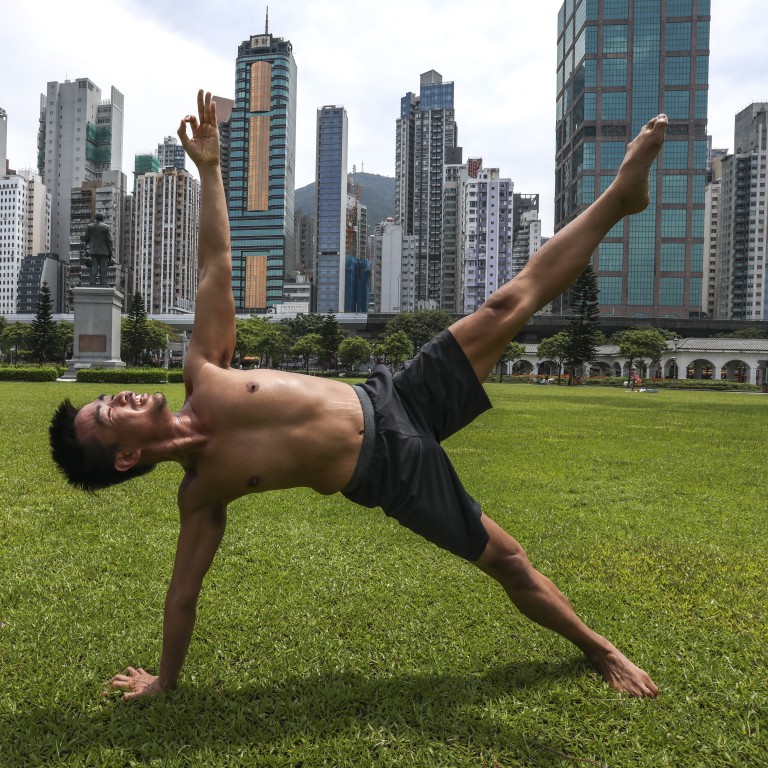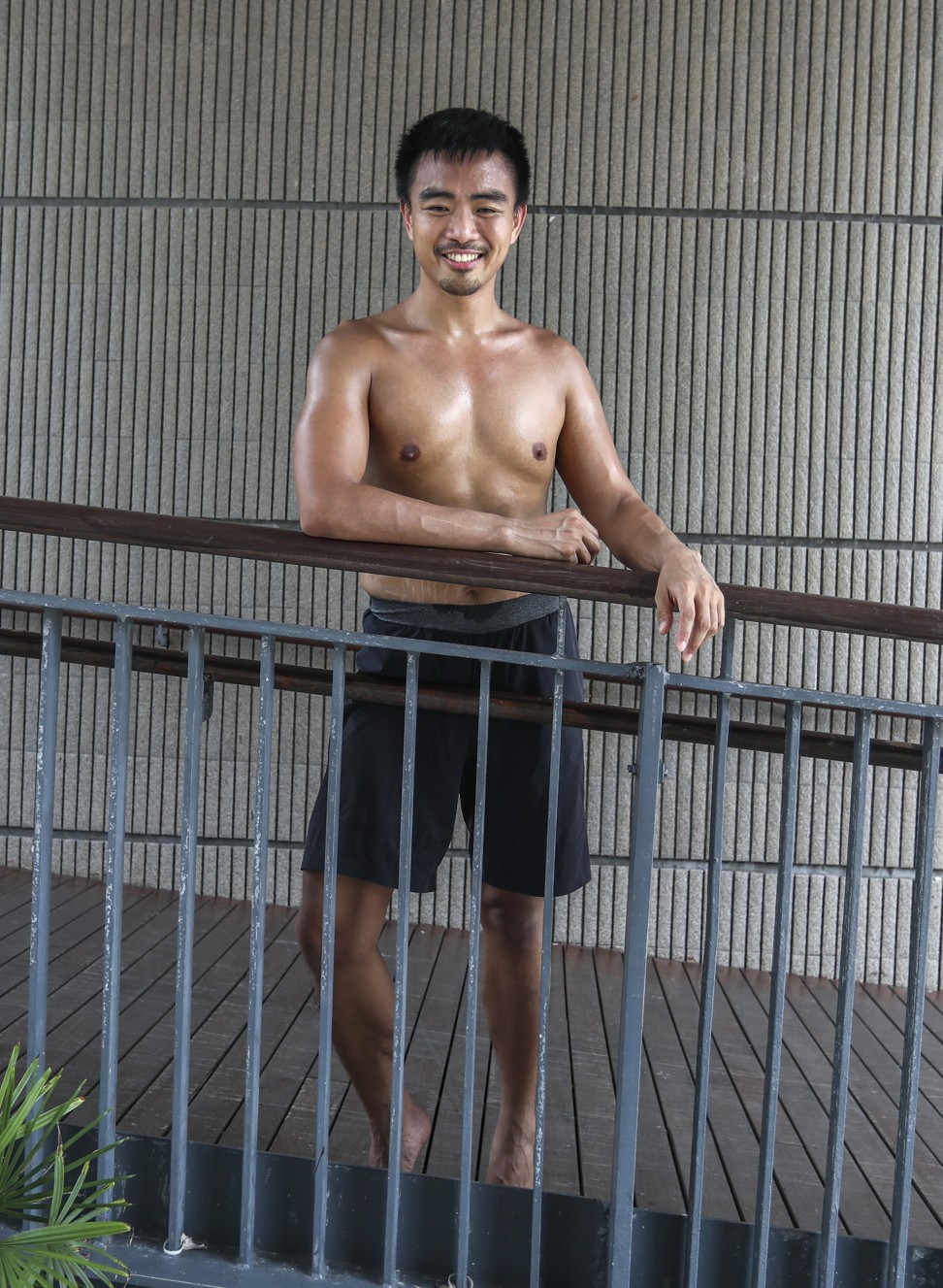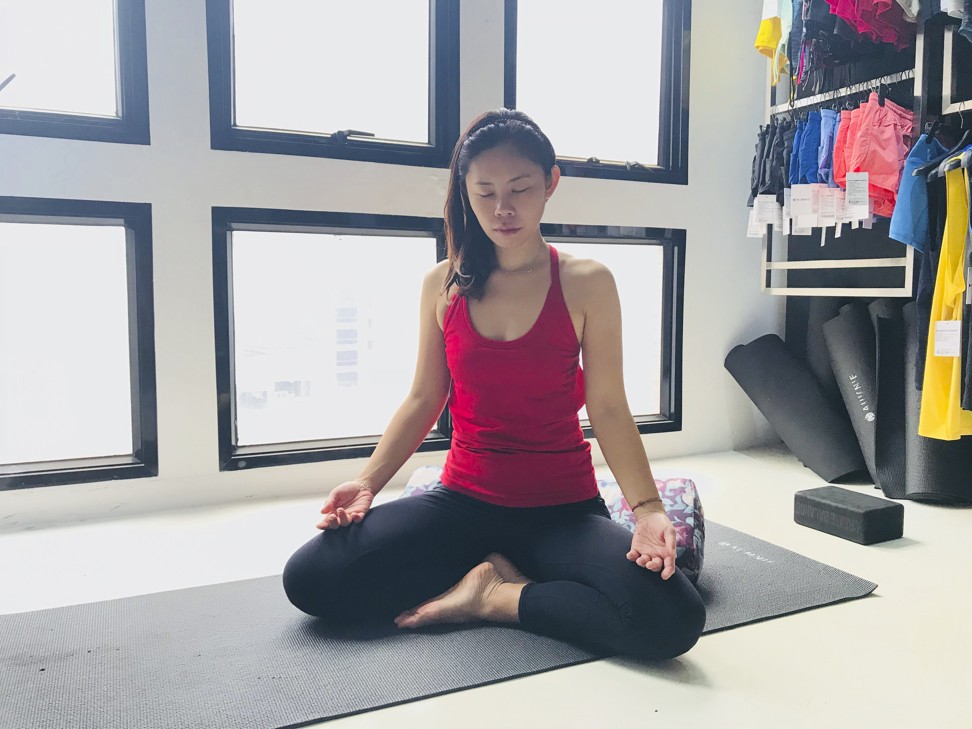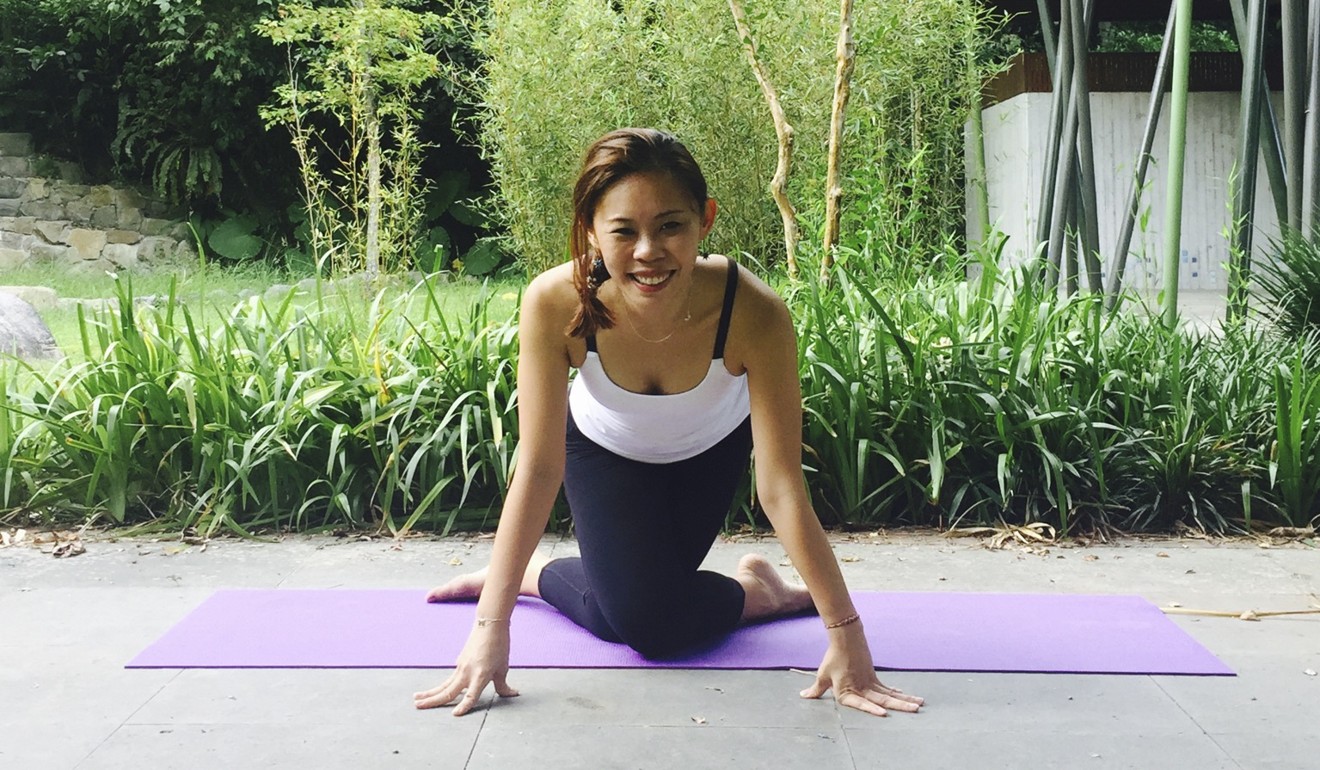
How yoga helps overcome addiction, depression: two first-hand accounts
- James Gannaban’s hard-partying lifestyle fuelled by booze and crystal meth saw him have a near-fatal overdose that resulted in a spell in jail
- April Tsai suffered severe depression after her mother’s death from ovarian cancer and her crushing grief led to a tearful collapse at work
Yoga is known for helping soothe the mind, combat stress and improve cognitive functions such as concentration. But it can also go further: growing evidence shows it can complement treatment for psychological conditions and can ameliorate symptoms of post-traumatic stress disorder (PTSD).
Some patients struggle to complete standard treatments for these conditions due to difficulties with impulse control and managing intense emotions.
Sixty-four women diagnosed with treatment-resistant PTSD took part in a study that saw them receive alternate treatment: either a 10-week yoga programme or 10 weeks of supportive women’s health education.
While both groups showed reduced PTSD symptoms, the yoga group maintained those improvements for longer, and a little over half of that group (16 of 31 women) improved to such an extent that they no longer met the criteria for PTSD.
The research was conducted by Dutch doctor Bessel van der Kolk and published in 2014 in The Journal of Clinical Psychiatry. It supported yoga as a supplementary treatment for PTSD, saying it helps patients “tolerate physical and sensory experiences associated with fear and helplessness and to increase emotional awareness”.
The paper also noted that yoga improves body awareness – something that is necessary to manage emotions – saying that “learning to notice, tolerate, and manage somatic experience may substantially promote emotion regulation”.
Larger studies are needed to gauge yoga’s impact on mental health, and to determine conclusively whether it can serve as a first-line treatment. Still, some converts say this practice has triggered transformations in their mental health.
Age-related muscle loss: why it happens and how to deal with it
James Gannaban moved to Hong Kong in 2005 and fell in with the city’s LGBT community. But the Filipino spiralled into a hard-partying lifestyle, fuelled by booze and crystal meth.

The then-marketing and PR professional didn’t realise that he needed to address childhood issues – having been sexually abused by an uncle from age six to eight, and insecurities from growing up gay – to feel whole without substance abuse.
“I was looking for external solutions to my internal maladies, to fill that existential hole, but that’s not possible,” says the 38-year-old.
“Drug addiction is a symptom rather than itself a problem. People don’t just become addicts.”
One night in April 2015 he was found unconscious in his apartment lying in his own blood and urine.
“There’s a saying in Alcoholics Anonymous (AA) – our malady leads us to three things: jail, institutions or death. I knocked on all three,” he said on this near-fatal overdose that resulted in a spell in jail.
That painful experience sharpened his determination to change.

It took nearly nine months: 60 days at The Cabin Chiang Mai rehab centre in Thailand, then six-and-a-half months at a similar facility – Serenity in The Steps in the Philippines’ Baguio City.
His treatment entailed group therapy and individual cognitive behavioural therapy to address the emotional scars from childhood that were at the root of his anxieties.
I could immerse myself and become really still; instead of seeking external fixes or solutions, I turned inward
At both facilities, patients learn self-care through healthy activities, including yoga.
It started at The Cabin. Gannaban remembers an instructor telling everyone to breathe into the space where they felt tightness. “I didn’t realise I held tension in so many parts of my body,” Gannaban says.
From the mat, he learned to train his mind, observe emotions that arise, then let them go.
“I could immerse myself and become really still; instead of seeking external fixes or solutions, I turned inward,” he says.
Just focusing on his breathing achieved that state. Yoga cultivated contentment within him, of “just being” instead of always having to prove himself.
Gannaban is now four years clean and yoga is a core part of his anti-drug routine. Whenever he gets a drug craving, he applies tools learned from rehab. That includes pausing and making better decisions, with yoga having taught him the difference between a reaction and a response.
“I can call a friend, attend an AA meeting, go to yoga class or do my own practice,” he says. This meditative routine has made him more aware of his actions.
Gannaban now teaches vinyasa yoga – a style characterised by movements linked with breath – at Positiv Wellness in Wan Chai and at WeWork locations on Hong Kong Island.
He relishes this latest phase in his life, including renewed and “wonderful” relations with his family.
Toxic positivity: why being too happy can be a bad thing
“In two years, I paid back my dad and sister for the rehab. I haven’t missed a single payment,” he says. Now, people can count on him.
Conventional treatment didn’t work for April Tsai’s severe depression after her mother’s death from ovarian cancer in April 2016.
After taking the antidepressant Prozac for a month, her suicidal thoughts had been quelled but she was left feeling “numbed”. Side effects including drowsiness and fatigue didn’t help.
The oppressive black cloud she felt hanging over her wouldn’t go away, either. “I didn’t have energy to even kill myself,” she recalls.

The 37-year-old from Taiwan had practised yoga since 2008, but was too exhausted to continue. Despite her crushing grief, she continued working at her job in a cosmetics company in Hong Kong for five months after her mother’s death – until she had a tearful collapse in the office.
She stopped taking her antidepressants straight away. Desperate for an alternative solution, she signed up for a 200-hour yoga therapy teacher-training course in Bali.
At the ThaiVedic School she learned holistic approaches that incorporate Ayurveda, the traditional Indian system of medicine that translates from Sanskrit as “knowledge of life”. This included Thai bodywork and massage.
“I felt I was healing everyday … You use your body to move and work, and learn more about yourself,” she recalls.

Ayurvedic yoga is based on an ancient Indian system involving five elements – air, water, fire, earth, and ether – with routines to address energy imbalances.
Some people who grieve hold many emotions in the body; for Tsai, that meant excess “air” – particularly in the joints – plus “earth” making her feel sluggish. Rotating the joints in her hips and legs helped, as did strenuous poses such as planks and headstands.
I didn’t believe in Western medicine and chose another way. I chose yoga because I believe in it.
Emotions such as anger and sadness welled up throughout her yoga sessions. As she grew physically stronger she learned more about what her teachers called the heart-mind-body connection, including how they all affect one another and how their closer alignment fosters healing.
“Yoga is a tool that lets you get connected to your heart and body, then the healing happens,” she says.
The experience taught her how to embrace and manage her emotions.
“I never imagined I could be a yoga teacher,” she says, but she started teaching it part-time in January 2017, having returned to her full-time job a month earlier.

Having a purpose motivates Tsai to carry on. One thing she has done is create the Water Lily Yoga Project 2017 (named after her mother, Lily).
It raised HK$10,000 (US$1,300) through charity classes for an NGO called Mayaa Nepal, which helps children in Nepal in need of medical and educational support. This year, she rebranded the project as Vata Yoga. She also left her job to dedicate herself fully to yoga.
Tsai encourages anyone suffering from grief or depression to seek help, and to consider a form of yoga practice.
“I didn’t believe in Western medicine and chose another way,” she says. “I chose yoga because I believe in it. Whichever tool you have faith in will work with you.”

